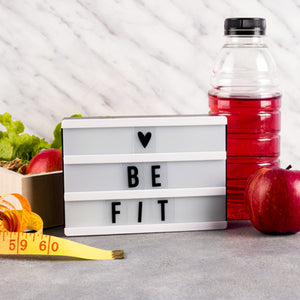
Can't Build Muscle? You Must Read This
When you walk into any commercial gym, from sea to shining sea, the story remains the same. I see men and women fully dedicated to "working out," yet the vast majority haven't even come close to tapping into their potential.
Do they look decent? Yes. Are they engaged in a healthy lifestyle that promotes longevity and overall well-being? Yes. Are they packing on much muscle mass? On the average, no.
Related: How to Build Muscle Mass Fast
Obviously, not everyone wants to be a mass monster bodybuilder. I don't. You probably don't either. With that said, most of us want a little more muscle than we have now.
Yet, despite this eagerness, and despite years of hard workouts, very little is changing. What gives? Why isn't the time being invested in the gym turning into the results we want? Why is it that beginner gains came somewhat easily, yet we've barely packed on a pound or two of muscle since?
Let me explain.
Beginner Muscle Building Gains
When you first enter the gym life is easy. You're untrained - or haven't seriously touched a weight in a long time. If ever. You can pretty much do anything during this time and make some progress. Sure, the muscle building gains you are experiencing aren't Herculean, but they sure are noticeable.You look better. Combining your resistance training with cardio and improved eating, you are looking lean and healthy.
But, after six months the progress stalls. You can't build muscle to save your life. Months pass. Years pass. Suddenly you've put in hundreds, if not thousands of workouts, and nothing is working.
What the heck is happening? The beginner gains had you excited. You felt like you were on the right track. You could taste 16-inch arms, a lean waist, and a squat booty so amazing that it could stop traffic.
But it's not happening.
You turn to articles, videos, and magazines for help. But you're confused. There is so much information to process. Everyone seems to have their own way of building muscle.
But what works? What's needed? What's excessive? What's the fastest way?
The following four tips will help you build muscle at a much faster rate. You can apply these tips to basically any muscle building workout and see amazing results. So, stop looking for magic solutions, and start attacking these four basics.

Can't Build Muscle? Start Here...
Tip #1 - Simplify Your Exercises
You only have so many hours each week to lift. To maximize your time, make sure you maximize your exercise selection.I am often asked, "Does this cable/isolation/machine exercise build muscle?" Yes, most exercises will help you build muscle. There are really very, very few bad exercises. Bad exercises are ones where the injury risk is simply too great.
Here's what you need to remember. Even though an exercise can help you build muscle, that doesn't mean it's the best or most efficient choice.
Exercise selection comes down to good, better, best. Is an exercise a good choice? A better choice? Or is this exercise the best choice?
If you fill your workouts with only good choices, then your results are going to suffer. If you fill your workouts with the best possible choices, then you'll be well on your way to maximizing your time in the gym. What are examples of the best exercises? This is not a comprehensive list; merely quality choices.
- Quads - Squats, Front Squats, Paused Squats, 20 Rep Squats
- Hamstrings - Romanian Deadlifts, Dumbbell Romanian Deadlifts, Glute/Ham Raises, Reverse Hypers
- Chest - Bench Press, Dumbbell Bench Press, Incline Bench Press, Chest Dips
- Back - Deadlifts, Barbell Rows, Dumbbell Rows, Pull-Ups
- Shoulders - Military Press, Seated Dumbbell Press, Push Press
- Triceps - Close Grip Bench Press, French Press, Lying Triceps Extensions
- Biceps - Barbell Curls, Dumbbell Curls, Chin Ups
Take Home Tip - When you avoid challenging exercises and seek the easiest possible way to work out, your body will show it. On the other hand, when you choose challenging exercises, your body will respond.
Tip #2 - Train More Frequently
 Do I believe body part splits, or bro splits are the best way to go for everyone? No. Many times they encourage an overuse of isolation exercises. I mean honestly, you can't perform 5 to 6 compound exercises on chest day without beating the living snot out of your body.
Do I believe body part splits, or bro splits are the best way to go for everyone? No. Many times they encourage an overuse of isolation exercises. I mean honestly, you can't perform 5 to 6 compound exercises on chest day without beating the living snot out of your body.More than this, there is mounting scientific evidence that training a body part multiple times per week may increase the rate at which you build muscle. Sounds awesome, doesn't it?
If you've been trapped in the body part split for a very long time I honestly don't recommend that you jump right into training each muscle group three times per week. Instead, try twice a week, or every four days. Any increase in frequency is a good move.
A four day a week upper/lower split is a quality choice. Typically, your schedule will look something like this:
- Day 1 - Upper Body A
- Day 2 - Lower Body A
- Day 3 - Off
- Day 4 - Upper Body B
- Day 5 - Lower Body B
- Day 6 - Off
- Day 7 - Off
- Day 1 - Upper Body A
- Day 2 - Off
- Day 3 - Lower Body A
- Day 4 - Off
- Day 5 - Upper Body B
- Day 6 - Off
- Day 7 - Lower Body B
- Day 8 - Off
- Day 9 - Upper Body A
- Day 10 - Off
- Day 11 - Lower Body A
- Day 12 - Off
- Day 13 - Upper Body B
- Day 14 - Off
Take Home Tip - There is a lot of pressure to use a full body workout and train only three times per week. This is a good approach if you haven't already built up much strength. Once you have though and require numerous warm-up sets per major compound movement, a full body workout can take quite a long time to complete. This is why I recommend an upper/lower for most.
Tip #3 - Progress in Reps, Then Weight
Now that you are training more frequently, and using a better exercise selection, let's focus on progressive overload. This tip alone will help you thrive, even if you decide to use sub-par exercises and a bro training split.Progressive overload is king. Repeat. Progressive overload is king. If you aren't pushing yourself in the gym to add more reps to a set, and more weight to the bar, your gains will slow to a halt.
This is where most lifters fail.
They hit the gym and perform work, but this work is rather pointless. There is no goal heading into each set. Reps are knocked out but very few sets turn out to be money sets. What do I mean by this?
A money set is a set that isn't wasted.
Here is what I recommend if you aren't building muscle. Push every set for as many reps as possible. Stop that set when you feel like you might fail on the next rep, or when your form starts to slip. By doing so you will naturally add reps to sets. This will also allow you to add weight to the bar in a natural manner.
When you maximize each set in this manner, you maximize every workout. When you maximize every workout, you maximize the muscle building process. Simple. Brutal. Effective. This style of training will kick your butt.
Arnold Schwarzenegger knew the truth.
The last three or four reps is what makes the muscle grow. This area of pain divides the champion from someone else who is not a champion. That's what most people lack, having the guts to go on and just say they'll go through the pain no matter what happens.
Science and common sense back this up. The further you push a set, the more muscle fibers you recruit. Fatigue sets in, each additional rep becomes more challenging, and the body has to work harder to complete it.Take Home Tip - This style of training is called auto-regulated progression. You add weight as your body allows. It is a safer, more natural option than linear progression where you are forced to add weight each week, even at the expense of form.
Tip #4 - Use Food As Growth Fuel
Clean eating, or healthy eating, isn't good enough. Sure, it's good for longevity, but to build muscle you need to use a very specific eating style that is much more focused.Do you know how many calories you are eating per day? Do you know how many grams of protein you take in? If not, you're missing the gains boat.
Here are some general guidelines. They will help with muscle growth, recovery, and repair.
Meal Frequency. Eat at least 3-4 high protein meals per day. If you struggle to take in enough protein, add in a couple "snack" meals. These can consist of protein shakes, high protein foods, or even a protein bar.
For men, try to take in at least 25 to 30 grams during each meal. Women, aim for at least 20 grams of protein per meal.
Protein Intake. For males, I recommend 180 to 220 grams of protein per day. While this is just a hair more than is typically needed to build muscle, it does allow for a more balanced, less carb-centric diet. In addition, meat... Yes, meat. Who doesn't like meat?
Women, try to take in about 100 to 120 grams of protein per day. Make 80 grams your absolute minimum.
Calorie Intake. Make sure you are eating at least at your daily calorie maintenance level. If you're not sure what this is, click on the link below to find out.
Calculate Your Total Daily Energy Expenditure
Men, it is best to eat about 300-500 calories above this level. Women, not so much. Women can choose to slowly bulk by eating several hundred calories above maintenance, but truthfully most females don't mind a slower rate of muscle gain in return for remaining lean.Healthy Fats & Carbs - Use 25 to 35% of your daily calories for healthy fats. Use the rest of your calories for carbs.
Take Home Tip - Think of a muscle building diet in terms of a new lifestyle. Random food choices lead to random results. Focused eating leads to more precise results. Commit to this new eating lifestyle and watch your body change.






